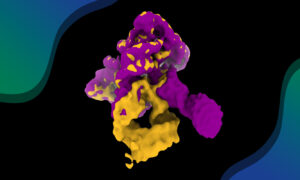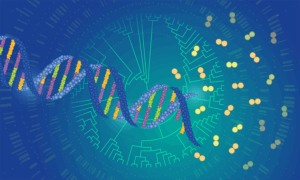
On the orchids of Darwin
How Darwin’s work revealed the intimate relationship between orchids and insects

By Andrea Cerase
Many people know about Darwin’s voyage on the Beagle and his detailed examination of the finches in the Galapagos Islands, which gave him crucial insights for developing his theory of evolution. It is less well known that Darwin spent a considerable amount of time studying orchids too. His book Fertilisation of Orchids was, in fact, the next work he published after his famous On the Origin of Species.
Darwin’s studies of orchids began in England, not far away from his home in Kent. He was amazed and fascinated by the huge variety of colours and shapes in this family of plants. From painstaking observations, meticulous dissections of local and exotic species, and field experiments, Darwin concluded that orchids, unlike self-pollinating or wind-pollinated plants, relied on insects for pollination. He suggested that cross-fertilisation – in which one plant is fertilised by pollen from another – would increase a plant’s genetic fitness and provide the diversity needed for natural selection, leading to evolution and the development of new species. He hypothesised that the mesmerising combinations of forms and colours in orchids all served the same purpose: to attract insects to achieve this cross-fertilisation. As he wrote in the closing chapter of Fertilisation of Orchids: “In my examination of Orchids, hardly any fact has so much struck me as the endless diversity of structure,—the prodigality of resources,—for gaining the very same end, namely, the fertilisation of one flower by the pollen of another.”

Tools of attraction
Orchids, unlike most flowers, have asymmetrical petals. In particular, the modified lower petal or labellum – Latin for ‘lip’ – in orchids has evolved in a myriad of different shapes and colours. Darwin hypothesised that such variety was needed to attract different kinds of pollinating insects. He also suggested that some orchids have evolved special one-to-one relationships with their respective pollinators, rewarding them with nectar in exchange for their help with pollination.

We now know that only some orchids produce nectar, but all of them have found a way to attract insects to spread their pollen. Some orchid flowers attract insects with special colours or patterns. Some use trickery, releasing sexual pheromones in order to ‘seduce’ insects. Others have a labellum that is modified to such an extent that it looks like the back of a female insect, encouraging males to try to mate with it.
Mysterious moth
When Fertilisation of Orchids was first published in 1862, it was relatively well received by botanists and academics but strongly criticised by natural theologists such as George Campbell, eighth Duke of Argyll, who ridiculed Darwin’s theories in his 1867 book, The Reign of Law. In particular, Argyll severely criticised one of Darwin’s predictions about the existence of an extreme one-to-one orchid-insect partnership. After carefully examining an orchid from Madagascar, Darwin had concluded that it was most likely fertilised by a moth with a proboscis nearly 30 cm long – something Argyll described as: “nothing but the vaguest and most unsatisfactory conjecture.”
Such a moth was eventually found in Madagascar, but unfortunately not until 21 years after Darwin’s death. While he himself did not see this and many of his other theories confirmed, his book on orchids represents an important part of his legacy. It laid the foundations for another branch of evolutionary studies, co-evolution, which examines the way two or more species can have mutual effects on each other’s evolution. This remains a fascinating area of study for scientists around the world.

Some of the most fascinating questions in science are about origins. As part of our latest editorial theme, we’re exploring the idea of origins at EMBL. We want to talk about the origins of biological systems, about our people and the paths that brought them here, and the discoveries and ideas that have their origins here.


